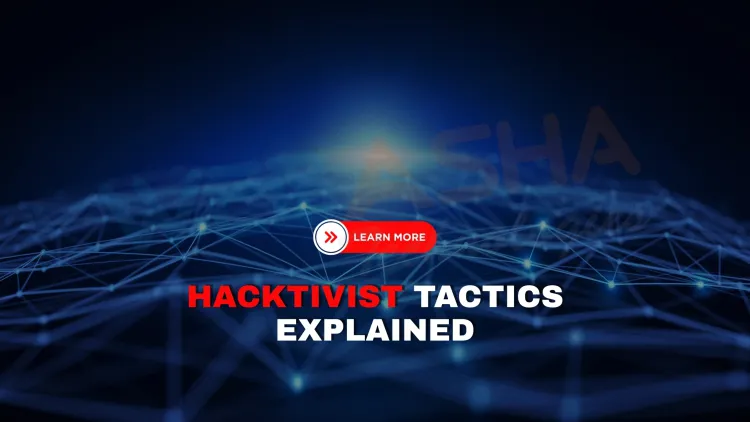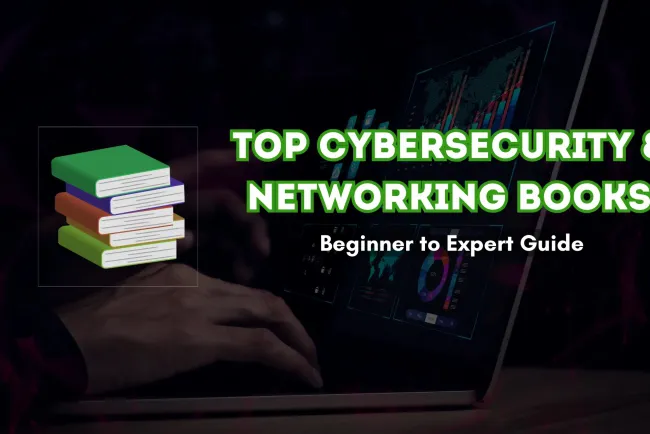How Hacktivist Groups Gain Attention and Select Targets | Modern Hacktivist Strategies Explained
Cybersecurity researchers have uncovered how hacktivist groups have evolved since 2022, moving beyond ideology to focus on media visibility, monetization, and perception hacking. These groups now systematically select targets like government agencies, financial institutions, and popular platforms such as LinkedIn and TikTok to maximize publicity. Modern hacktivist tools include advanced DDoS kits, ransomware, and command-and-control frameworks, often marketed as both weapons and services. Additionally, many attacks are exaggerated or faked for attention, making reputation management as crucial as technical defenses. This guide explains how these groups operate, select targets, and manipulate public perception through strategic digital campaigns.

Table of Contents
- Introduction
- What Are Hacktivist Groups and Why Are They Changing?
- How Hacktivist Groups Gain Attention Today
- Target Selection: Why Hacktivist Groups Attack Certain Organizations
- Tools and Techniques Hacktivists Use Today
- Verification: How Hacktivist Groups Prove Their Attacks
- Why This Matters for Organizations
- Key Takeaways from the Research
- Conclusion
- Frequently Asked Questions (FAQs)
Introduction
In today’s digital world, hacktivist groups aren’t just about ideology anymore. A new report reveals that these cyber groups have shifted from simple activism to attention-seeking and monetization strategies. Their methods now focus on creating buzz, growing their online presence, and even offering paid services. This evolution makes it harder for cybersecurity teams to predict who these groups will target next.
Let’s break down how hacktivist groups gain attention, select their targets, and use perception hacking to shape public opinion.
What Are Hacktivist Groups and Why Are They Changing?
Hacktivist groups are collectives that use hacking techniques to promote political, social, or ideological causes.
Since 2022, researchers noticed a major shift. Instead of only focusing on causes, hacktivist groups now care about:
-
Maximizing visibility
-
Boosting their online reputation
-
Generating income through cyber services
Events like Russia’s invasion of Ukraine and the Middle East conflict have amplified this trend, driving more hacktivist activity across the globe.
How Hacktivist Groups Gain Attention Today
Unlike before, where they mostly stayed underground, modern hacktivist groups act more like social media influencers:
-
Branding: Groups have logos, slogans, and dedicated channels on platforms like Telegram.
-
Alliances and Rivalries: Groups form partnerships or compete for followers, similar to online communities.
-
Perception Hacking: Groups exaggerate or fake the impact of their attacks to gain media attention.
For example, Graphika analysts tracked over 700 active and inactive hacktivist groups since 2022, finding that many shared inflated success stories even when no real harm was done.
Target Selection: Why Hacktivist Groups Attack Certain Organizations
Modern hacktivist groups are very selective about who they attack. Their main goal? Get as much publicity as possible.
Here’s how they choose:
-
Famous Brands: LinkedIn, Pinterest, TikTok, and Spotify are prime targets.
-
Government Websites: Always a top pick due to the political impact.
-
Financial Institutions: Seen as symbols of power.
These groups understand that hacking a big name gets them more attention than hacking a smaller, unknown website.
Tools and Techniques Hacktivists Use Today
Modern hacktivists don’t just rely on simple website defacement anymore. Their toolkit has expanded significantly, including:
| Tool | Description | Example Group |
|---|---|---|
| DDoS Tools | Overloads websites with traffic to make them crash | Abyssal by Mr Hamza Group |
| Ransomware | Encrypts files and demands payment | Used by some hacktivist-for-hire services |
| C2 Frameworks | Manages infected machines remotely | Advanced persistent threat (APT) groups |
For example, the Moroccan group Mr Hamza marketed its Abyssal DDoS tool as having “advanced technology.” Similarly, the DieNet group claimed their tool could create DDoS attacks “so massive it is like a black hole swallowing everything.”
Verification: How Hacktivist Groups Prove Their Attacks
To boost credibility, hacktivist groups often share:
-
Screenshots of Defaced Websites
-
Links to Status Check Services like check-host.net
-
Social Media Posts showing supposed downtime
But experts found many of these “proofs” misleading. Sometimes, hacktivists take credit for unrelated service outages. Other times, they post screenshots from public sites instead of actual attack results.
Why This Matters for Organizations
This evolution makes defending against hacktivist campaigns more challenging. Here’s why:
-
Target Diversity: Even non-political companies can become targets due to their visibility.
-
Perception Hacking: Businesses may face reputational damage even when no real breach occurs.
-
Tool Availability: DDoS tools and ransomware kits are now widely shared or sold online.
Organizations must strengthen both their technical defenses and their crisis communication strategies to handle these new types of threats.
Key Takeaways from the Research
-
Hacktivist groups today care as much about attention and money as ideology.
-
Target selection is driven by media value, not just political statements.
-
Tools like Abyssal and DieNet DDoS kits are marketed openly.
-
Perception hacking is a core strategy—what looks like a major hack may just be a PR stunt.
-
Cybersecurity teams need new strategies focusing on both real threat mitigation and reputation management.
Conclusion
The hacktivist world has changed. It’s no longer just about protesting through code; now, it’s about building a brand, gaining followers, and even profiting from cyber tools.
As these groups get more creative in how they attack and promote themselves, companies, governments, and cybersecurity professionals must stay ahead by monitoring trends, hardening defenses, and preparing for not just real attacks, but also perception-driven campaigns.
FAQs
What are hacktivist groups?
Hacktivist groups are collectives of hackers who use cyberattacks to promote political, social, or ideological causes.
How have hacktivist groups changed since 2022?
Since 2022, many hacktivist groups have shifted focus from pure activism to gaining media attention, building an online brand, and monetizing their operations.
Why do hacktivist groups target big brands?
Big brands like LinkedIn or TikTok provide maximum media coverage when attacked, helping hacktivist groups gain more visibility.
What is perception hacking in hacktivism?
Perception hacking involves overstating or faking the impact of cyberattacks to influence public opinion and media coverage.
How do hacktivist groups select targets?
Targets are chosen based on visibility and potential for media attention rather than technical challenge or ideology.
What is the Abyssal DDoS tool?
Abyssal is a DDoS tool developed by the Moroccan hacktivist group Mr Hamza, designed for high-impact attacks.
What is the DieNet DDoS tool?
DieNet is a DDoS tool claimed by the DieNet group to launch extremely large-scale attacks that overwhelm websites.
Do hacktivist groups sell hacking services?
Yes, many hacktivist groups now monetize their tools and offer cyberattack services for hire.
How do hacktivist groups prove their attacks?
They share screenshots, status check links, or social media posts showing service disruptions.
Are all hacktivist group claims real?
No, many claims are exaggerated or completely fabricated to gain media attention without actual hacking.
What is the role of branding in hacktivist groups?
Branding helps hacktivist groups build recognition and authority within the hacking community and among followers.
Why is cybersecurity against hacktivists difficult?
Hacktivist groups mix real attacks with fake news, making it hard to distinguish actual threats from perception hacking.
What kind of tools do modern hacktivist groups use?
They use DDoS kits, ransomware, command-and-control frameworks, and reputation management strategies.
Which industries are most targeted by hacktivists?
Government agencies, financial institutions, social media platforms, and high-visibility companies.
How do geopolitical events impact hacktivist activity?
Events like wars or conflicts often trigger waves of hacktivist activity aimed at related organizations.
What is the purpose of hacktivist alliances?
Alliances help groups amplify their reach, share resources, and coordinate larger attacks.
How can businesses protect against hacktivist attacks?
By implementing strong cybersecurity defenses, monitoring reputation online, and preparing crisis response plans.
What is Graphika's role in hacktivist research?
Graphika analyzes and reports on global hacktivist trends, revealing strategies and group behaviors.
What is check-host.net in hacktivist attacks?
It’s a service hacktivist groups use to show proof of attacks by sharing website status checks.
Can hacktivist groups perform ransomware attacks?
Yes, some hacktivist groups now use ransomware as part of their toolkit, either for ideological or monetary reasons.
What is a command-and-control (C2) framework?
It allows hacktivists to control infected devices remotely, managing operations without physical access.
How do hacktivist groups manipulate social media?
By sharing exaggerated claims, fake proofs, and branding themselves as successful to attract followers.
Are hacktivist groups active globally?
Yes, hacktivist activity is observed worldwide, with specific hotspots influenced by regional political events.
How do cybersecurity teams handle perception hacking?
By monitoring public channels, issuing clarifications, and distinguishing real incidents from false claims.
Is hacktivism illegal?
Yes, unauthorized hacking—even for ideological reasons—is considered a cybercrime under most laws.
Can hacktivist attacks cause real damage?
While many focus on reputation, some attacks can cause real service outages, data breaches, or financial loss.
How can organizations monitor hacktivist threats?
Through threat intelligence platforms, social media monitoring, and engaging with cybersecurity research reports.
What motivates modern hacktivist groups?
Visibility, ideological impact, financial profit, and online status within hacking communities.
How often do hacktivist groups fake attacks?
Frequently. Many groups inflate or fake attack reports to boost their reputation without actual hacking.
Why is DDoS for hire a problem?
It enables anyone to pay for attacks, making it easier for non-technical actors to launch cyberattacks.
How do hacktivist campaigns differ from APT groups?
APT groups focus on espionage and long-term access, while hacktivist groups prioritize public visibility and fast media impact.














![Top 10 Ethical Hackers in the World [2025]](https://www.webasha.com/blog/uploads/images/202408/image_100x75_66c2f983c207b.webp)








